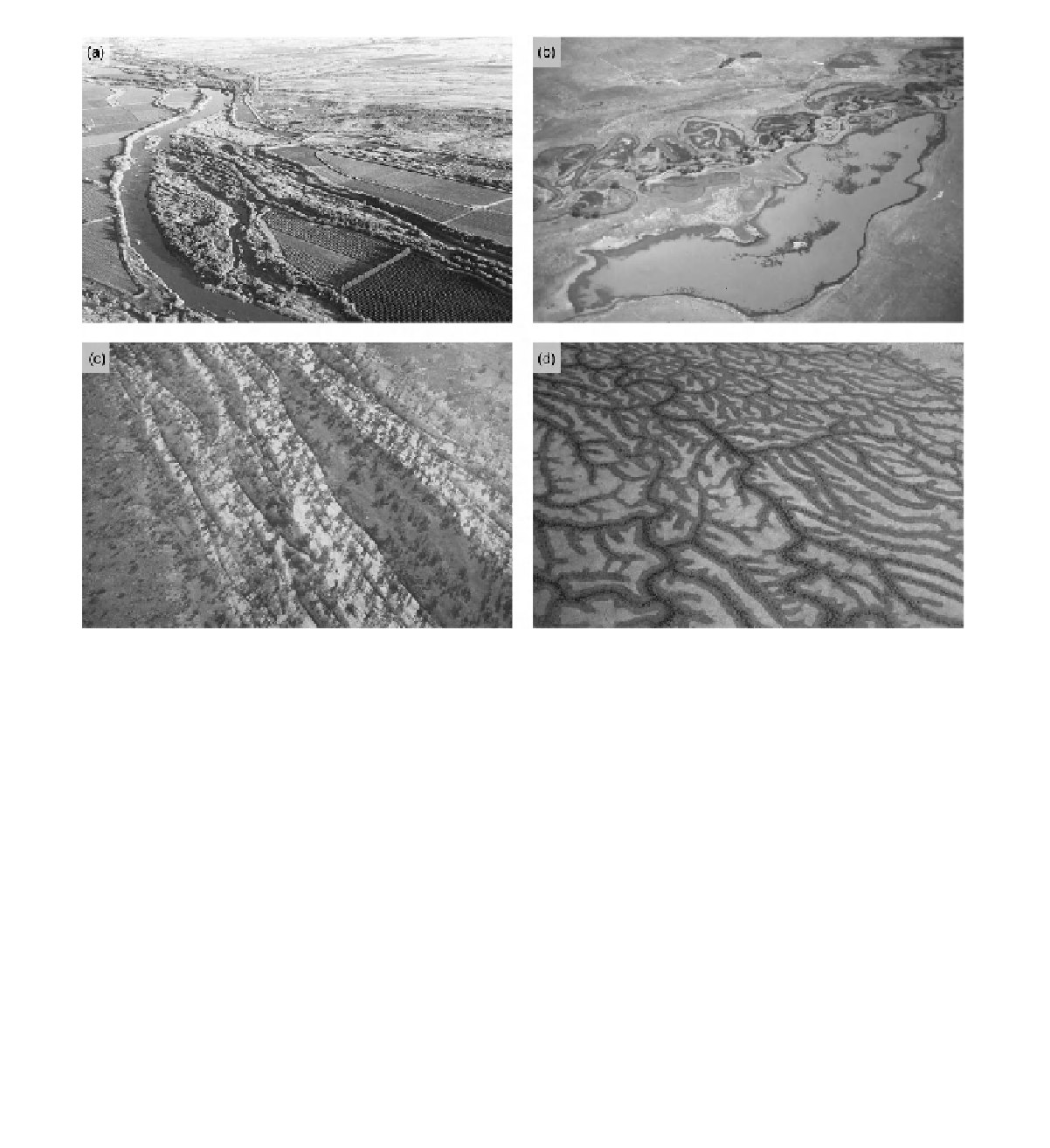Geoscience Reference
In-Depth Information
Figure 12.2
Oblique aerial views illustrating dryland rivers that contrast with many 'textbook' characteristics: (a) mixed
bedrock-alluvial anabranching on the Orange River, South Africa, illustrating a shallow valley with multiple channels that di-
vide and rejoin around large islands composed of alluvium and/or bedrock (flow direction from upper left to lower right); (b)
meandering on the Klip River, eastern South Africa, showing a sinuous channel (marked by invasive willow trees) flanked by
flooded oxbows and backswamps (flow direction from middle left to upper right); (c) alluvial anabranching on the Marshall River,
central Australia, illustrating multiple channels dividing and rejoining around vegetated, narrow ridges and broader islands (flow
direction towards lower right); (d) reticulate channels on the floodplains along Cooper Creek, eastern central Australia (general
flow direction from upper left to lower right).
generalisations about dryland river characteristics. In par-
ticular, studies of larger, lower gradient rivers draining
tectonically quiescent or tectonically inactive catchments
in Australia and southern Africa have served to empha-
sise how many dryland rivers exhibit processes, forms and
behaviours that contrast sharply with the 'textbook' char-
acteristics of dryland rivers (Figure 12.2). The extensive
anabranching, anastomosing and meandering rivers that
are characteristic of some parts of these drylands, for ex-
ample, challenge the common assumptions that braided
rivers are most common in drylands and that meander-
ing rivers are rarely developed, and also demonstrate how
some dryland rivers may exhibit forms, processes and be-
haviours that are similar to humid rivers, including aspects
1986; Nanson
et al.
, 1988; McCarthy and Ellery, 1998;
Knighton and Nanson, 1994a, 1997, 2000; Tooth, 1999;
Tooth and Nanson, 1999, 2000a, 2000b, 2004). Recent
overviews have drawn attention to the global diversity
of dryland rivers and have highlighted the greater over-
lap with rivers in other climatic settings (Nanson, Tooth
and Knighton, 2002; Powell, 2009), but these messages
have tended to become lost among the far more numerous
studies of rivers in small, steep, commonly tectonically
active catchments. For instance, in the most recent edited
volume on dryland rivers (Bull and Kirkby, 2002), the
thrust and balance of the chapters is focused largely on
catchments in the Mediterranean region (including Israel)
and the American southwest, which tend to conform to

